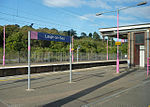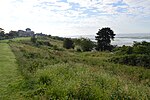Benfleet F.C.
1922 establishments in EnglandAssociation football clubs established in 1922Eastern Counties Football LeagueEssex Olympian Football LeagueFootball clubs in England ... and 2 more
Football clubs in EssexMid-Essex Football League
Benfleet Football Club is a football club based in Benfleet, Essex, England. They are currently members of the Eastern Counties League Division One South and play at Park Lane in Canvey Island.
Excerpt from the Wikipedia article Benfleet F.C. (License: CC BY-SA 3.0, Authors).Benfleet F.C.
Park Avenue, Castle Point Canvey Island
Geographical coordinates (GPS) Address Nearby Places Show on map
Geographical coordinates (GPS)
| Latitude | Longitude |
|---|---|
| N 51.516458055556 ° | E 0.61567805555556 ° |
Address
The Brockwell Stadium
Park Avenue
SS8 7PY Castle Point, Canvey Island
England, United Kingdom
Open on Google Maps








